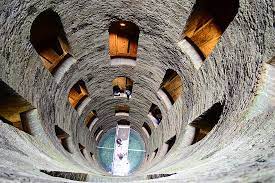Across the globe, wells have not only been sources of water but also focal points of cultural significance and architectural brilliance. From the deepest drilled points reaching the earth’s interior to ancient structures steeped in myth and history, these wells are as varied as they are magnificent. In this article, we explore three of the world's most incredible wells: the Kola Superdeep Borehole in Russia, the Woodingdean Well in England, and the Pozzo di San Patrizio in Italy.
1. Kola Superdeep Borehole: Journey to the Center of the Earth

Located on the Kola Peninsula in Russia, the Kola Superdeep Borehole holds the world record for the deepest artificial point on Earth. Drilling began in 1970 during the height of the Cold War, primarily for scientific research purposes. The project aimed to study the Earth's crust and provided valuable geological data during its active years.
Reaching a staggering depth of 12,262 meters (over 40,230 feet), the well penetrates deep into the continental crust, offering insights into the structure and processes of the Earth's interior. Though drilling was stopped in 1992, the data collected from this massive endeavor continue to contribute to scientific studies, making it a landmark achievement in geology.
2. Woodingdean Well: A Testament to Human Determination

The Woodingdean Well, located near Brighton in England, is renowned not just for its depth but for the extraordinary human effort involved in its creation. Completed in 1862, the well was hand-dug by laborers who worked in harsh conditions. With a depth of 1285 feet, it is one of the deepest hand-dug wells in the world.
The construction of Woodingdean Well was primarily for providing water to the nearby workhouse and its farms. The feat of its construction, achieved without the aid of modern machinery, stands as a testament to Victorian era grit and determination, highlighting the era's engineering capabilities and the lengths to which people would go to secure a water supply.
3. Pozzo di San Patrizio: A Marvel of Renaissance Engineering

The Pozzo di San Patrizio, or the Well of St. Patrick, in Orvieto, Italy, was built in the 16th century and is a masterpiece of Renaissance engineering. Designed by architect-engineer Antonio da Sangallo the Younger, this well was constructed to ensure water supply during sieges. At 62 meters deep, it features a double helix design allowing for one-way traffic of mules that carried water vessels.
This architectural wonder not only served a practical military purpose but also stands as a symbol of the ingenuity of its time. The well’s design and execution, with its twin spiral staircases that never meet, ensure efficient and uninterrupted movement within, making it a unique historical and engineering landmark.
Conclusion: Wells of Wonder
The stories of these three wells—the Kola Superdeep Borehole, the Woodingdean Well, and the Pozzo di San Patrizio—are testaments to human curiosity, ambition, and ingenuity. From penetrating the mysteries of the Earth’s crust to overcoming the challenges of ancient engineering, these wells are not just deep holes in the ground; they are storied monuments of human endeavor. Their legacies continue to inspire and captivate the imagination of people around the world, reminding us of the depths we can reach when we dare to dig deep.


















